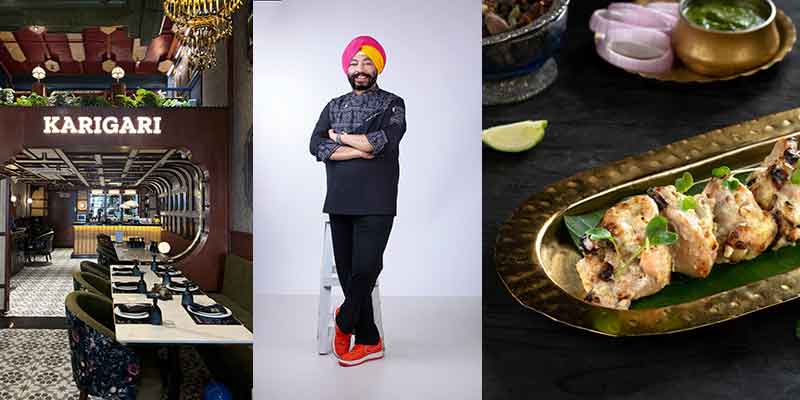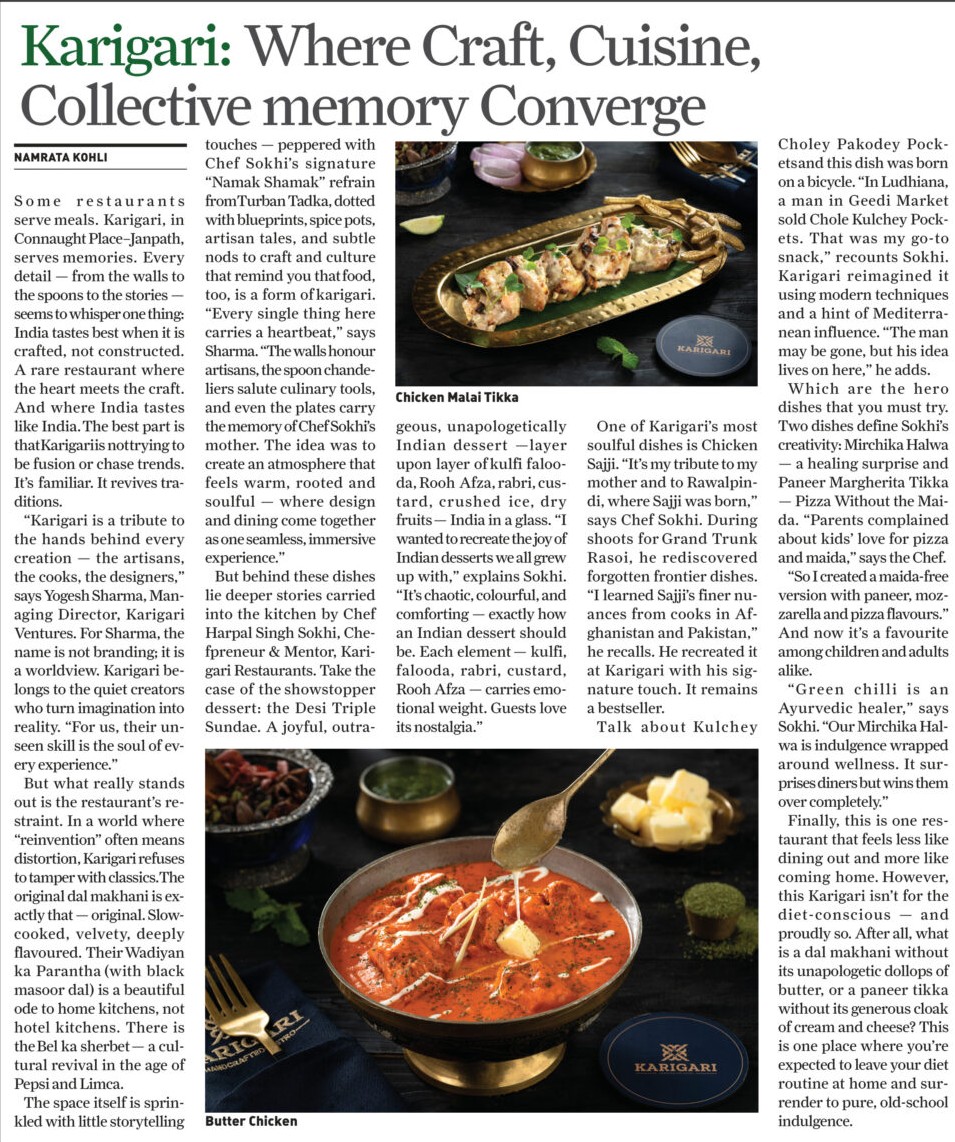Some restaurants serve meals. Karigari, in Connaught Place–Janpath, serves memories. Every detail — from the walls to the spoons to the stories — seems to whisper one thing: India tastes best when it is crafted, not constructed. A rare restaurant where the heart meets the craft. And where India tastes like India. The best part is that Karigari is not trying to be fusion or chase trends. It’s familiar. It revives traditions.

“Karigari is a tribute to the hands behind every creation — the artisans, the cooks, the designers,” says Yogesh Sharma, Managing Director, Karigari Ventures. For Sharma, the name is not branding; it is a worldview. Karigari belongs to the quiet creators who turn imagination into reality. “For us, their unseen skill is the soul of every experience.”
But what really stands out is the restaurant’s restraint. In a world where “reinvention” often means distortion, Karigari refuses to tamper with classics. The original dal makhani is exactly that — original. Slow-cooked, velvety, deeply flavoured. Their Wadiyan ka Parantha (with black masoor dal) is a beautiful ode to home kitchens, not hotel kitchens. There is the Bel ka sherbet — a cultural revival in the age of Pepsi and Limca.

The space itself is sprinkled with little storytelling touches — peppered with Chef Sokhi’s signature “Namak Shamak” refrain from Turban Tadka, dotted with blueprints, spice pots, artisan tales, and subtle nods to craft and culture that remind you that food, too, is a form of karigari. “Every single thing here carries a heartbeat,” says Sharma. “The walls honour artisans, the spoon chandeliers salute culinary tools, and even the plates carry the memory of Chef Sokhi’s mother. The idea was to create an atmosphere that feels warm, rooted and soulful — where design and dining come together as one seamless, immersive experience.”
But behind these dishes lie deeper stories carried into the kitchen by Chef Harpal Singh Sokhi, Chefpreneur & Mentor, Karigari Restaurants. Take the case of the showstopper dessert: the Desi Triple Sundae. A joyful, outrageous, unapologetically Indian dessert —layer upon layer of kulfi falooda, Rooh Afza, rabri, custard, crushed ice, dry fruits — India in a glass. “I wanted to recreate the joy of Indian desserts we all grew up with,” explains Sokhi. “ It’s chaotic, colourful, and comforting — exactly how an Indian dessert should be. Each element — kulfi, falooda, rabri, custard, Rooh Afza — carries emotional weight. Guests love its nostalgia.”

One of Karigari’s most soulful dishes is Chicken Sajji. “It’s my tribute to my mother and to Rawalpindi, where Sajji was born,” says Chef Sokhi. During shoots for Grand Trunk Rasoi, he rediscovered forgotten frontier dishes. “I learned Sajji’s finer nuances from cooks in Afghanistan and Pakistan,” he recalls. He recreated it at Karigari with his signature touch. It remains a bestseller.
Talk about Kulchey Choley Pakodey Pockets and this dish was born on a bicycle. “In Ludhiana, a man in Geedi Market sold Chole Kulchey Pockets. That was my go-to snack,” recounts Sokhi. Karigari reimagined it using modern techniques and a hint of Mediterranean influence. “The man may be gone, but his idea lives on here,” he adds.

Which are the hero dishes that you must try. Two dishes define Sokhi’s creativity: Mirchika Halwa — a healing surprise and Paneer Margherita Tikka — Pizza Without the Maida. “Parents complained about kids’ love for pizza and maida,” says the Chef.
“So I created a maida-free version with paneer, mozzarella and pizza flavours.” And now it’s a favourite among children and adults alike.
“Green chilli is an Ayurvedic healer,” says Sokhi. “Our Mirchika Halwa is indulgence wrapped around wellness. It surprises diners but wins them over completely.”
Finally, this is one restaurant that feels less like dining out and more like coming home. However, this Karigari isn’t for the diet-conscious — and proudly so. After all, what is a dal makhani without its unapologetic dollops of butter, or a paneer tikka without its generous cloak of cream and cheese? This is one place where you’re expected to leave your diet routine at home and surrender to pure, old-school indulgence.




